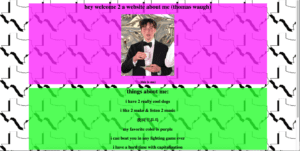Short History of the Internet provides detailed summary of, well, internet history.
It is interesting to see, how far we have advanced since 1993, the year the article was posted. It makes one wonder, what would the “fathers” of internet think about their creation today. Would they be proud? What would be their stance on net neutrality?
One interesting fact the article didn’t cover is US interest into developing ARPANET was the lead USSR made with the launch of the Sputnik. Once again, competition makes the world a better place for all of us, sometimes.
In 1993, Bruce Sterling, the author of Short History of the Internet, said, that no one own English, so according to this statement no one could own the internet. However, Internet initial purpose to educate and bring people “closer” nowadays is seen as a way to control the population.
The initial anarchy and lawlessness allowed some organisations and institution to gaining way too much power. Media basically controls the population. Inability to proof check led Twitter to being one of the most influential platforms on internet.
While it is great to have some freedom of speech, government institutions see it as a threat, which lead US to losing the net neutrality in 2018, China being censored and Russia about to lose neutrality and get censored.
While reading the article I realised how far we have advanced and how much we are about to lose. People do not pay enough attention to what happens in their countries, which leads to global domino effect.
